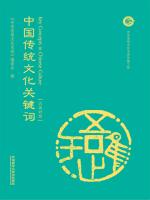Insights from..
Reflections on Keywords of Chinese Traditional Culture
After immersing myself in Keywords of Chinese Traditional Culture, I embarked on a profound journey through the rich tapestry of China’s millennia - old heritage. This book, a collection of pivotal cultural terms, serves as a bridge connecting the depth of Chinese traditions with the global audience, offering a nuanced understanding of the nation’s philosophical, social, and artistic essence.
One of the most captivating aspects of the book is its exploration of philosophical keywords. Concepts like “道” (Dao), “仁” (Ren), and “中庸” (Zhongyong) are not merely abstract ideas but the very foundation of Chinese thought. The detailed explanations reveal how Dao represents the cosmic order and the natural way of life, while Ren emphasizes benevolence and moral integrity. The principle of Zhongyong, or the Golden Mean, advocates for balance and moderation in all aspects of life. These philosophical tenets have guided Chinese society for centuries, shaping its values, ethics, and approach to governance. Through the book, I realized how these ideas continue to resonate today, offering wisdom for modern challenges such as ethical decision - making and harmonious coexistence.
The book also vividly portrays Chinese cultural practices and aesthetics through keywords related to festivals, arts, and daily life. For example, terms like “春节” (Spring Festival), “书法” (Calligraphy), and “中医” (Traditional Chinese Medicine) showcase the diversity and uniqueness of Chinese culture. The description of the Spring Festival, with its rituals of family reunion, red decorations, and traditional foods, reflects the importance of family bonds and cultural continuity. Meanwhile, calligraphy is not just a form of writing but an art that embodies the writer’s spirit and personality. Traditional Chinese Medicine, with its holistic approach to health, reveals the deep connection between humanity and nature in Chinese culture. These cultural elements are not static relics of the past but living traditions that evolve while retaining their core significance.
Another significant insight from the book is its role in dispelling cultural misunderstandings. By providing precise and context - rich interpretations of these keywords, it helps non - Chinese readers overcome common misconceptions. For instance, the concept of “面子” (Mianzi), often misinterpreted as mere vanity, is actually a complex social construct related to dignity, reputation, and social harmony. Understanding these nuances is crucial for fostering cross - cultural communication and mutual respect.
In conclusion, Keywords of Chinese Traditional Culture is not just a reference book but a cultural compass. It has deepened my appreciation for the complexity and beauty of Chinese traditions, highlighting their relevance in a globalized world. This reading experience has inspired me to further explore the cultural roots that underpin China’s identity and to share these timeless values with a wider audience, believing that such understanding can contribute to greater cultural exchange and global harmony.



 京公网安备 11010802032529号
京公网安备 11010802032529号